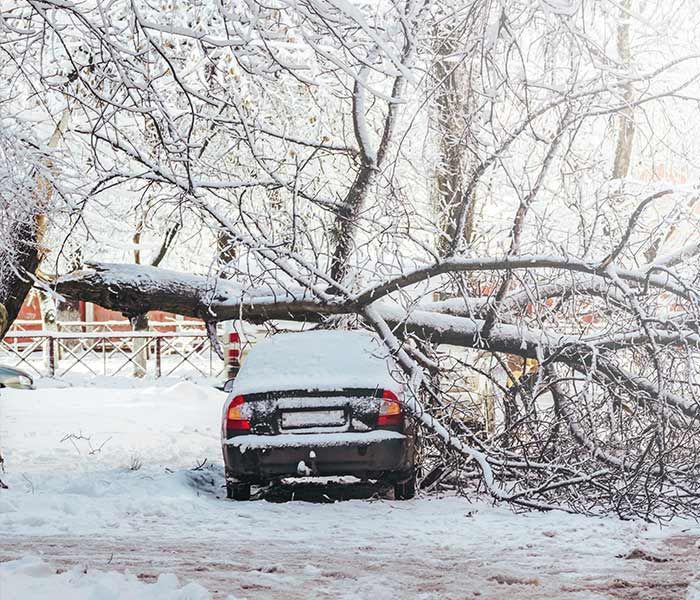Recognizing Tree Hazards in Stewartsville, NJ
Trees provide significant benefits to our homes and cities, but when trees fall and injure people or damage property, they are liabilities. Taking care of tree hazards makes your property safer and prolongs the life of the tree. Trees are an important part of our world. They offer a wide range of benefits to the environment and provide tremendous beauty.
However, trees may be dangerous. Trees or parts of trees may fall and cause injury to people or damage to property. We call trees in such situations hazardous, to signify the risk involved with their presence. While every tree has the potential to fall, only a small number actually hit something or someone.
It is an owner’s responsibility to provide for the safety of trees on his or her property. This brochure provides some tips for identifying the common defects associated with tree hazards. However, evaluating the seriousness of these defects is best done by a professional arborist. Regular tree care will help identify hazardous trees and the risk they present. Once the hazard is recognized, steps may be taken to reduce the likelihood of the tree falling and injuring someone. Contact us at Sunshine Tree & Landscape when you need assistance!
Tree Hazard Checklist:
- Are there large dead branches in the tree?
- Are there detached branches hanging in the tree?
- Does the tree have cavities or rotten wood along the trunk or in major branches?
- Are mushrooms present at the base of the tree?
- Are there cracks or splits in the trunk or where branches are attached?
- Have any branches fallen from the tree?
- Have adjacent trees fallen over or died?
- Has the trunk developed a strong lean?
- Do many of the major branches arise from one point on the trunk?
- Have the roots been broken off, injured, or damaged by lowering the soil level, installing pavement, repairing sidewalks, or digging trenches?
- Has the site recently been changed by construction, raising the soil level, or installing lawns?
- Have the leaves prematurely developed an unusual color or size?
- Have trees in adjacent wooded areas been removed?
- Has the tree been topped or otherwise heavily pruned?
Defects in Urban Trees
The following are defects or signs of possible defects in urban trees (see image above):
- regrowth from topping, line clearance, or other pruning
- electrical line adjacent to tree
- broken or partially attached branch
- open cavity in trunk or branch
- dead or dying branches
- branches arising from a single point on the trunk
- decay and rot present in old wounds
- recent change in grade or soil level, or other construction
Defects of Rural Trees
The following are defects or signs of possible defects in Rural trees (see image above):
- recent site construction, grading and tree removal, clearing of forests for development
- previous tree failures in the local area
- tree leaning near a target
- forked trunk; branches and stems equal in size
- wet areas with shallow soil
Managing Tree Hazards
An arborist can help you manage the trees on your property and can provide treatments that may help make your tree safer, reducing the risk associated with hazardous trees. An arborist familiar with hazard tree evaluation may suggest one or more of the following:
Remove the target. While a home or a nearby power line cannot be moved, it is possible to move picnic tables, cars, landscape features, or other possible targets to prevent them from being hit by a falling tree
Prune the tree. Remove the defective branches of the tree. Because inappropriate pruning may weaken a tree, pruning work is best done by an ISA Licensed Arborist.
Cable and brace the tree. Provide physical support for weak branches and stems to increase their strength and stability.
Provide routine care. Mature trees need routine care in the form of water, fertilizer (in some cases), mulch, and pruning as dictated by the season and their structure.
Remove the tree. Some hazardous trees are best removed. If possible, plant a new tree in an appropriate place as a replacement.
Recognizing and reducing tree hazards not only increases the safety of your property and that of your neighbors but also improve the tree’s health and may increase its longevity!
Ensuring Quality Care for Your Tree
Trees are assets to your home and community and deserve the best possible care. If you answered “yes” to any of the questions in the tree hazard checklist or see any of the defects contained in the illustrations, your tree should be examined by an ISA Licensed
arborist. If your tree is located near a power line, contact your local electrical utility.
Sunshine Tree & Landscape is your local landscaping contractor and arborist in Stewartsville, NJ.
870 Route 57 Stewartsville, NJ 08886
Business Hours

Sunshine Tree & Landscape. All Rights Reserved. Sitemap

